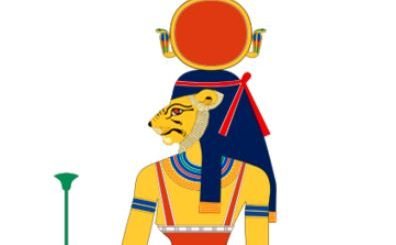Creator deities in ancient Egyptian mythology
In ancient Egyptian mythology, a number of deities were associated with creation, and their roles and stories varied depending on the city or region.
Here’s a summary of some of the most prominent creation deities:
Atum (or Tem or Atem)

Atum
A solar deity worshiped primarily in Heliopolis, Atum was believed to have emerged from the primordial waters of Nun and created himself. He then created the first couple, Shu (air) and Tefnut (moisture), who went on to produce Geb (earth) and Nut (sky). Atum is sometimes synonymous with Ra, the sun god.

Ra (or Re)
The sun god Ra was one of the most significant deities in the Egyptian pantheon. In many myths, Ra emerged from the primordial waters and created all things. Each morning he was born and traveled across the sky, and each evening he died, only to be reborn the next day.
Ptah

Unlike other myths where creation results from physical processes or interactions, Ptah’s creation was through thought and word. He conceived the world in his heart and spoke it into existence with his tongue.
Worshiped primarily in Memphis, Ptah was a creator god who brought the world into existence through his heart (thought) and tongue (speech). The Memphis Theology credits him with the creation of gods and all things by his thoughts and words. This emphasizes the power of thought and speech, highlighting the intellectual and abstract aspect of creation.
Neith
In the city of Sais, Neith, a war and weaving goddess, was considered the creator of the world and sometimes depicted as a cow whose milk nourished all of creation.

Amun
Originally a minor god from Thebes, Amun’s importance grew, especially during the New Kingdom. He was often merged with Ra to form Amun-Ra. In Theban cosmogony, Amun was seen as the primordial creator from whom all things emanated.

Amun
The Ogdoad
Worshiped in Hermopolis, the Ogdoad was a group of eight deities: four male gods paired with their female counterparts. These deities represented the primeval elements. They were Nun and Naunet (the primordial waters), Kuk and Kauket (darkness), Huh and Hauhet (infinity), and Amun and Amaunet (hiddenness). They played a role in shaping the primordial chaos into the ordered world.

Rooted in the city of Hermopolis, the Ogdoad creation myth revolves around a group of eight deities consisting of four male-female pairs. These deities (i.e. the Ogdoad) represented the primordial elements of the cosmos: water, eternity, darkness, and air.
It’s also worth mentioning that the Ogdoad were artistically portrayed as water beings since they resided in the water: the males took the form of frogs, while the females appeared as snakes. These groups eventually merged, leading to a significant disturbance that birthed the pyramidal mound. From this mound, the sun emerged, ascending into the sky to illuminate the world.
Khnum

Egyptian god Khnum
Worshiped in Elephantine, ancient Egyptian god Khnum was depicted with a ram’s head. He was believed to have fashioned humans on his potter’s wheel from the clay of the Nile.
Conclusion
The above ancient Egyptian gods and goddesses are just a few examples of creation deities that we know of today.
It is essential to note that ancient Egyptian religious beliefs were not static. They evolved over time and varied by region, leading to a rich and complex tapestry of myths and deities. Each center of worship had its own local deities and creation myths, but these myths coexisted and often intermingled throughout ancient Egyptian history.




























